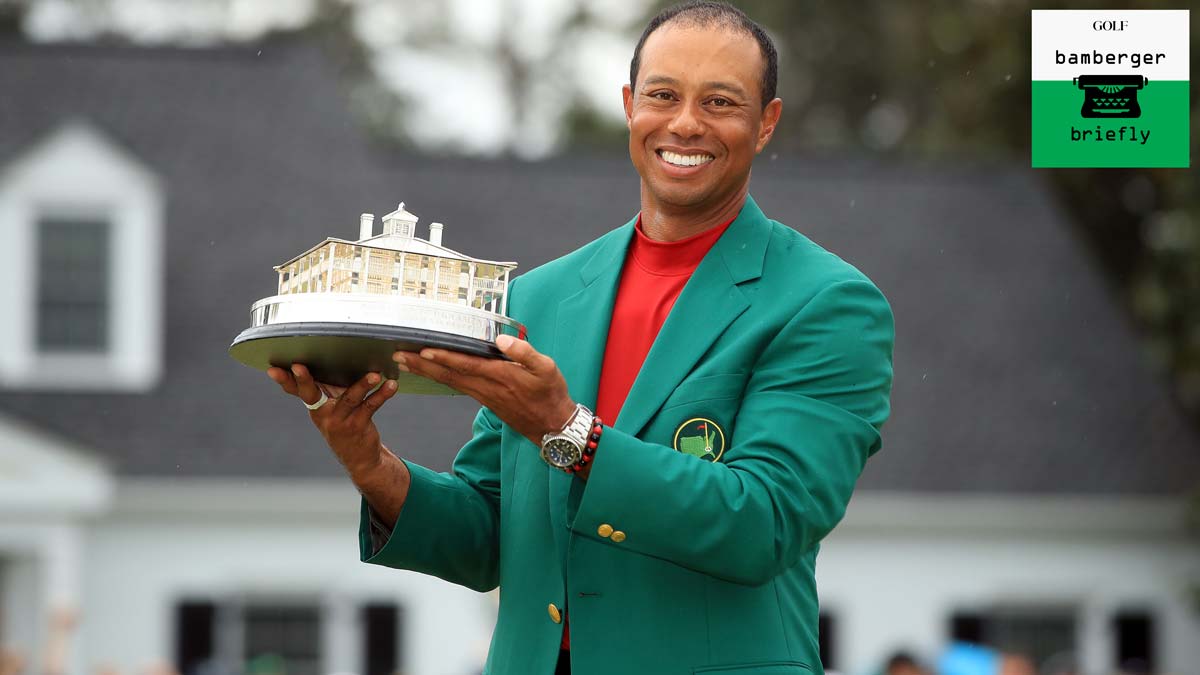Sixty years ago, Arnold Palmer won at Augusta National. Nobody said at the time, “Oh, he now has two majors.” That is, his ’58 and ’60 Masters titles. Nobody said, “Arnieboy now has three!” Had somebody said that, it would have referred to the two wins at Augusta National and his 1954 U.S. Amateur title, but things were in flux then, and Kennedy-Nixon was only part of it.
In 1960, a few golfy hipsters were warming to the idea of a professional grand slam. There were “major events,” like the Western Open and the Canadian Open. But the idea of “four majors” was less settled and it remained unsettled for a long time.
In 1986, when Jack Nicklaus won his sixth Masters, Dave Anderson, in his Monday column for The New York Times,made a reference to Big Jack’s “20 major titles.” That is, six green coats, five PGAs, four U.S. Opens, three British Opens — and two U.S. Amateurs. That 1986 Masters was the first Tiger ever watched. He was 10. He had zero majors then. Now he has 15 majors, or 18, depending on who’s counting and when. He has three U.S. Amateurs.
Palmer liked to take credit for inventing the idea of the ”pro Grand Slam.” That is, the Masters, the U.S. Open, the British Open and the PGA Championship. In his telling, he came up with it after he won the 1960 U.S. Open, meaning he had two of the four that year, with two to play. I’m looking into that and will report back when I know more.
By the way, Palmer finished second at the Open at St Andrews and tied for seventh at the PGA, held at Firestone Country Club, in Akron. Some year. It was the first time he played in “the four majors,” as we think of them today, in the same year. Ben Hogan never played those four events in the same year. Byron Nelson did it once. Sam Snead did it three times. Woods has done it 18 times. That’s the number Palmer went out on. Jack Nicklaus did it 36 times. That’s astounding.
Nicklaus’s father’s golfing hero was Bobby Jones, and Jones and his amateur contemporaries had a clear idea of the four major golf titles: the U.S. and British Opens, the U.S. and British Amateur championships. Every golf buff knows that Jones won the “Grand Slam” in 1930 when he won those four majors in one year. At least that part is clear. The Masters, by the way, didn’t exist yet. The PGA was one of golf’s grand events, with a stupendous trophy, but it was only for the workingmen. The pros. Some of the game’s best players were amateurs, Jones chief among them.
There’s a Tallahassee lawyer named Sidney Matthew who is a Bob Jones biographer and scholar. People like Sid Matthew add immeasurably to the richness of the game and our enjoyment of it. I asked him the other day, by email, who first came up with the term Grand Slam to describe Jones’s 1930 achievement.
Matthew got back to me the next day. According to his research, years in the making, O.B. Keeler, Jones’s Boswell, came up with the term, before Jones actually achieved it. Jones completed the Grand Slam on Sept. 27, 1930, when he won the U.S. Amateur at Merion.
Matthew’s email had eight attachments. One of them was a photograph of the front page of The Dallas Morning News from Sept. 28, 1930. The banner headline across the eight columns of the sports section read: “Jones Wins Amateur Crown for Grand Slam.”
You have to love newspapers, Sid’s research, useful outlets of compulsive tendencies and amorphous record-keeping. And if you want to make the case that Tiger has 18 majors, knock yourself out. You’ll have company.
Michael Bamberger welcomes your comments at Michael_Bamberger@GOLF.com.

